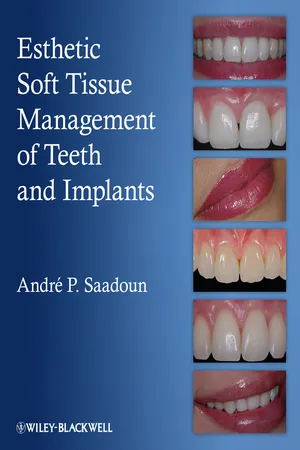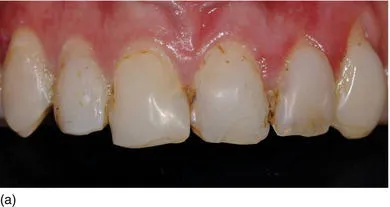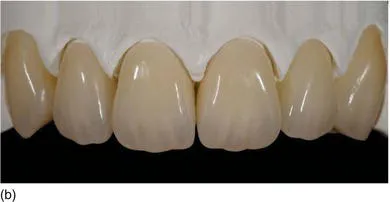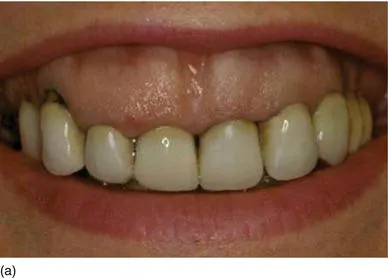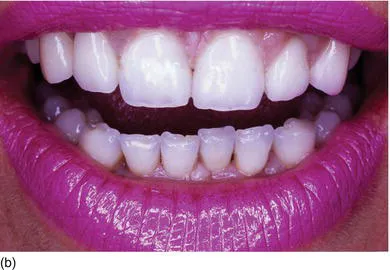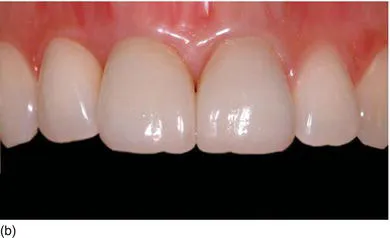![]()
1
Introduction
Each one of us has a different response to beauty, to esthetics, and to art. The accepted standard of “beauty” in individuals in any society today is subject to an incredible amount of influence, and to their ethnic, racial, and environmental surroundings. It is necessary to maintain a healthy balance between perfect appearance and a philosophy of life that includes physical and psychological factors (Gürel, 2008a).
These concepts evoke an emotional response that varies on a personal level, affecting us through the filter of our civilization, our society, our own experience, and our individual lives (Touati, 2008).
A recent study shows that two patients out of three declare that they have an esthetic need. It also shows that this demand is greater amongst women than amongst men, and that all socioeconomic strata, even the poorest, are represented (Zlowodzki et al., 2008).
Beauty varies with the criteria of time and fashion. Today’s facial beauty is based more on “make-up” than on natural beauty. However, in our generation, among the facial criteria of beauty, a perfect smile has become a major feature and offers many advantages for the person wearing the smile. The mouth is responsible for 60–70% of the visual perception of the face (Fig. 1.1).
A harmonious smile does not just come from beautiful lips. It cannot be conceived without a perfectly healthy gingival frame and well-aligned, healthy, natural teeth. Since the smile is a vital component of a beautiful face and there is a high patient demand for beauty, demands for smile enhancement with cosmetic restorations (Figs 1.2a–c), periodontal surgery (Figs 1.3a–c), or implant restorations (Figs 1.4a, b) continue to increase. This is why it is more correct to speak today about plastic peri-implant surgery, rather than just peri-implant surgery.
Cosmetics can give an impression of beauty, but it is a fleeting one. However, the creation of a beautiful smile, which cannot be washed off at the end of the day, is a more permanent proposition. The fundamental criteria of dentogingival esthetics are perfectly established and must be a part of the esthetic culture of every clinician. Clinicians in dentistry must, therefore, engage in more than just guesswork. They must adopt a scientific approach when analyzing dentogingival esthetic criteria, to establish the main alterations that are needed to their patients’ smiles before proposing orthodontic, surgical, and/or restorative solutions.
The purpose of modern dentistry is to achieve the best possible result with minimal tissue invasion, thus giving the patient a beautiful smile, with a long-term, predictable result and without prejudicing the integrity of the structure of the remaining teeth. When a smile needs to be redesigned, the clinician should have the competence to evaluate and integrate this smile into the harmony of the face.
Although beauty may be the patient’s only goal, and certainly the desired outcome of treatment, the objectives of orthodontics, operative dentistry, periodontal therapy, and restorative dental-implant therapy are more complex. Esthetic orthodontics has recently benefited from far more discreet appliances, such as ceramic brackets, but also by using a mini-implant or a normal implant to move teeth in an ideal relation. Esthetic restorative dentistry, which is benefiting from continual progress in the area of bonding agents, composite materials, and ceramic materials, can now provide very natural direct and indirect restorations to the anterior and posterior teeth – restorations which are indistinguishable from the natural dentition.
Periodontal therapy is leaning more and more toward tissue improvement methods, with the use of osseous, connective tissue grafts and tissue engineering, but is concerned, first and foremost, with maintaining the health of periodontal structures and correcting any gingival disharmony to achieve a balanced and esthetic gingival contour.
Implantology has revolutionized therapeutic options for every type of edentation, from a single tooth to the replacement of several teeth, and proposes increasingly esthetic solutions not only seeking to achieve good osseointegration, which is very important from a functional point of view, but also to preserve or reconstruct the harmonious peri-implant gingival morphology around the restoration, which is necessary from an esthetic point of view.
With regard to the long-term outcome of implant therapy, osseointegration is no longer the principal concern. The soft tissues and emergence profiles, the shape and shade of the restoration, must now also mirror the adjacent teeth as closely as possible. The stability of the results over time should be without question.
Nowadays, esthetic demands may take precedence over functional outcomes. Demands for “perfection” are constantly on the rise, and the standards to be achieved are getting higher and higher. In most cases, perfect results require extensive intervention, and the durability of such perfection may be unpredictable. To consistently achieve superior clinical esthetic outcomes in a significant number of cases, biology teaches us the painful lesson that patience is a virtue.
The pursuit of perfection requires a commitment on the part of the patient to surgical and prosthetic intervention that is often difficult to predict prior to initiation of care. It would be surprising to think that patients who had attended large numbers of clinical appointments to achieve excellent results had routinely understood, prior to the initiation of treatment, that this was what was going to be required (Eckert, 2008).
Staging certain cases and watching them develop gives time to evaluate each phase before the next step is carried forward. This in turn gives time for the body’s tissues to mature, harmonize, and stabilize. While waiting for maturation of grafted tissues, good provisional restorations can often satisfy the patient during that interim period. This allows the clinician to finish the case not as quickly as possible, but as quickly as nature allows, in order to achieve the most desirable result. As clinicians, it is our duty to appreciate that each case must be approached on its own merits and that we must cater for treatment to each patient individually (Sethi, 2008).
Esthetic dentistry has the ability to change a person’s life. Nowadays, a seductive smile is a precious anatomical aid to success in society. The smile is one of the most important means of communication between people. A joyful expression reveals your soul, and sometimes joy is the source of your smile, but your smile can also be the source of your joy. The esthetics and beauty of the smile are not only determined by the lips and the shape, position, and color of the teeth, but also by their existing relations with the gingiva and the overall harmony of the face (Figs 1.5a, b).
The harmony of the smile depends on esthetic criteria based on respect for the horizontal, vertical, and sagittal references. There are hundreds of languages in the world, but a smile speaks them all. According to a Chinese proverb, while laughing is selfish, ...
